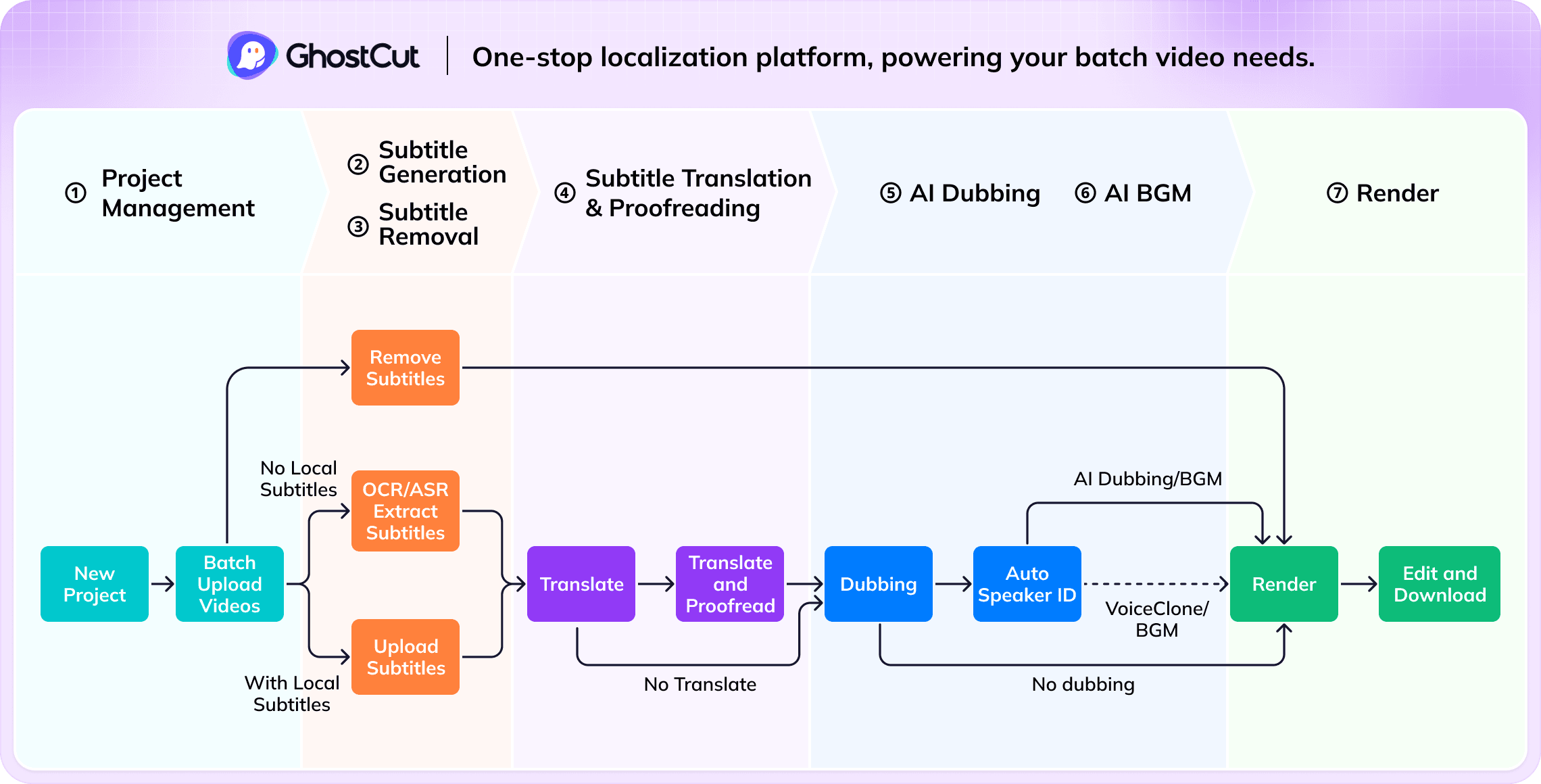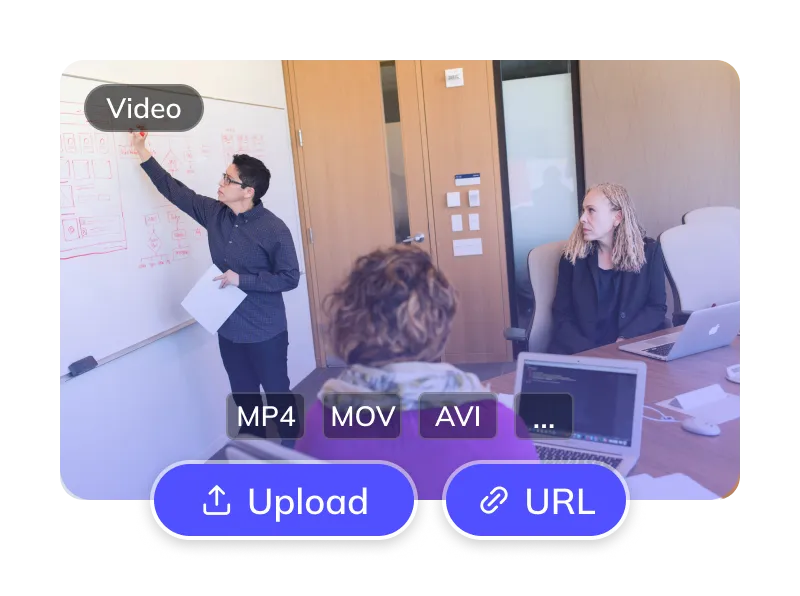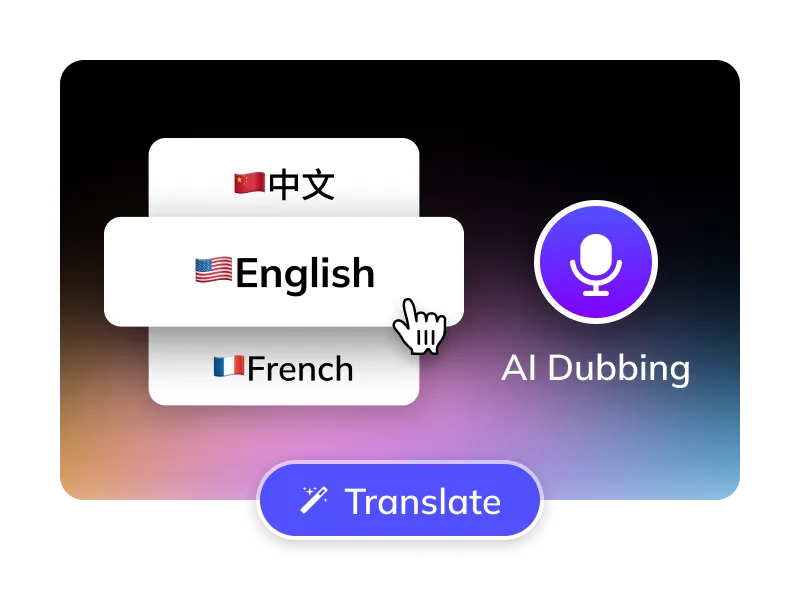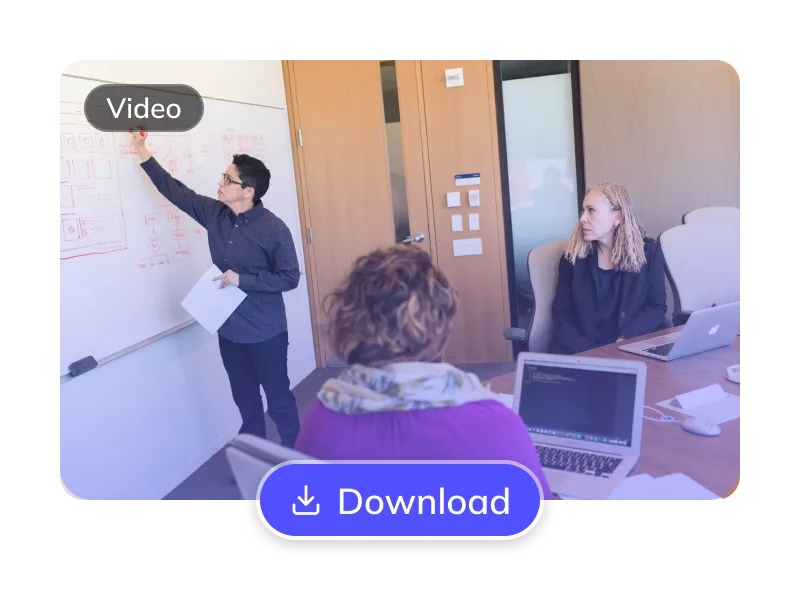How to Translate Chinese Videos to English ?
Translate Chinese Videos to Japanese in 3 Easy Steps
Trusted by 1,500,000+ Global Creators and Businesses
Why GhostCut for Your Video Translations?
GhostCut is your all-in-one AI solution for translating Chinese content into natural, engaging Japanese.
Effortless Project Management
Manage Chinese assets, subtitles, & Japanese videos. Batch process projects efficiently.
Pinpoint Japanese Accuracy
Up to 99.5% accurate. Optimized for Chinese-to-Japanese with LLM calibration & multi-agent review for culturally fluent Japanese translations.
Lifelike Japanese AI Dubbing
Choose from diverse, human-like Japanese AI voices (US/UK accents). Emotion-cloning technology captures original tone for natural Japanese delivery.
Flexible Chinese Subtitle Options
Optionally erase original Chinese hardsubs for a clean slate. Translate embedded Chinese subtitles directly.
Smart Multi-Speaker ID (Chinese)
AI detects multiple speakers in Chinese videos. Assign or clone distinct Japanese voices per character, with cross-episode consistency for complex Japanese dubs (dramas, interviews).
Efficient Batch Processing & API
Batch translate and dub 100s of Chinese videos to Japanese at once. Seamlessly integrate with our robust API.
Versatile BGM Control
Keep or mute original BGM. Our unique tech can also isolate sound effects, meeting diverse copyright and distribution needs.
Unbeatable Value
Flexible Chinese-to-Japanese plans. Try core features free. Automated pro service from just $0.1/minute.
Easy Online Access
No downloads. Instantly translate Chinese videos to Japanese online. Works on Windows, Mac, & major mobile browsers for cloud processing anywhere.
The GhostCut Edge: Unmatched Accuracy, Speed, and Value.
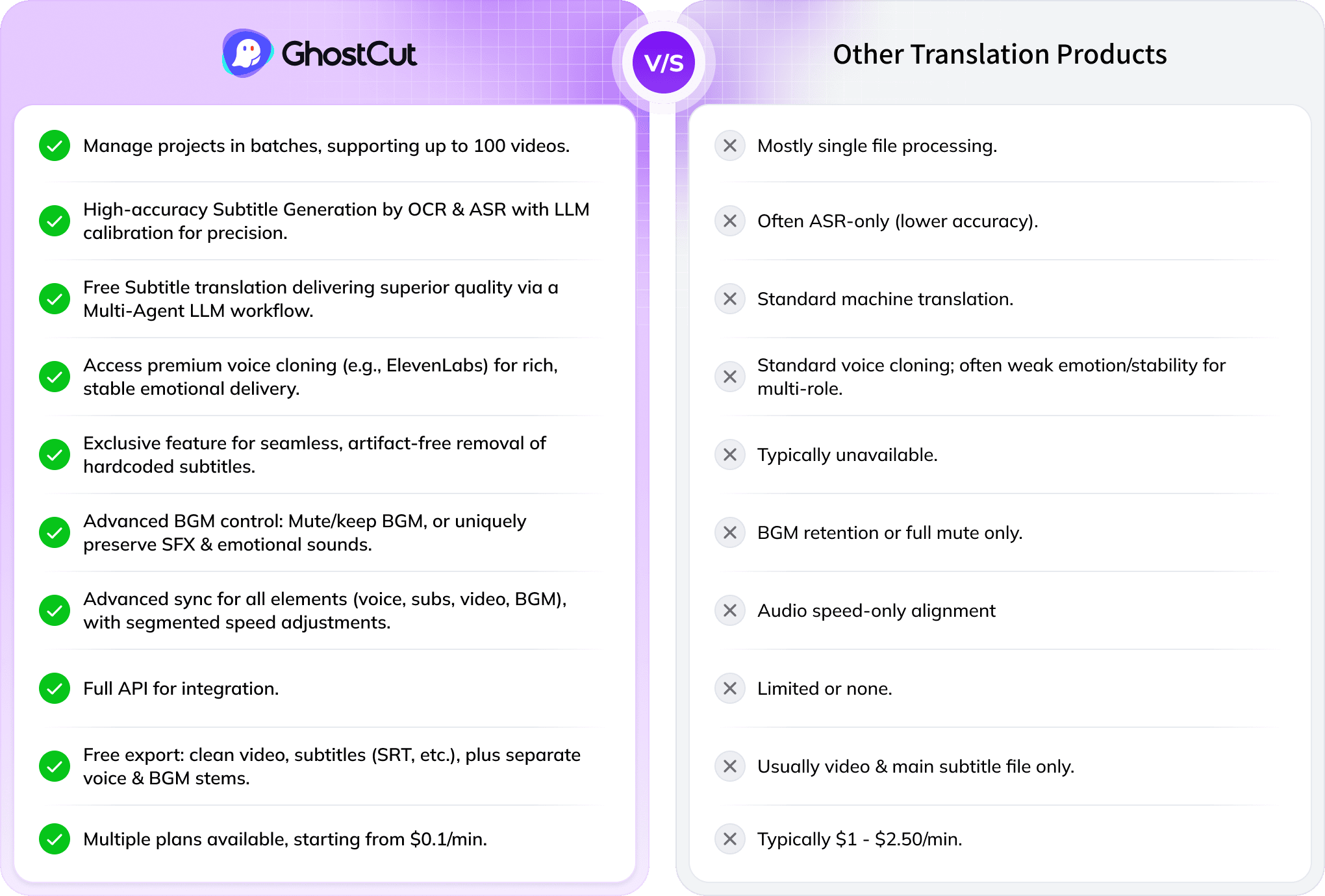
Every Algorithmic Optimization, Engineered for Quality Japanese Video
Mastering Long-Form Chinese Drama & Multi-Character Dubbing
Translating a 100-minute Chinese drama with 4000+ lines and many characters into Japanese is tough. Standard AI struggles to tell speakers apart, causing errors. GhostCut’s multi-modal AI (video, voice, text) excels in long-form, multi-speaker content, ensuring accurate, consistent character voices across entire series.
Translate Now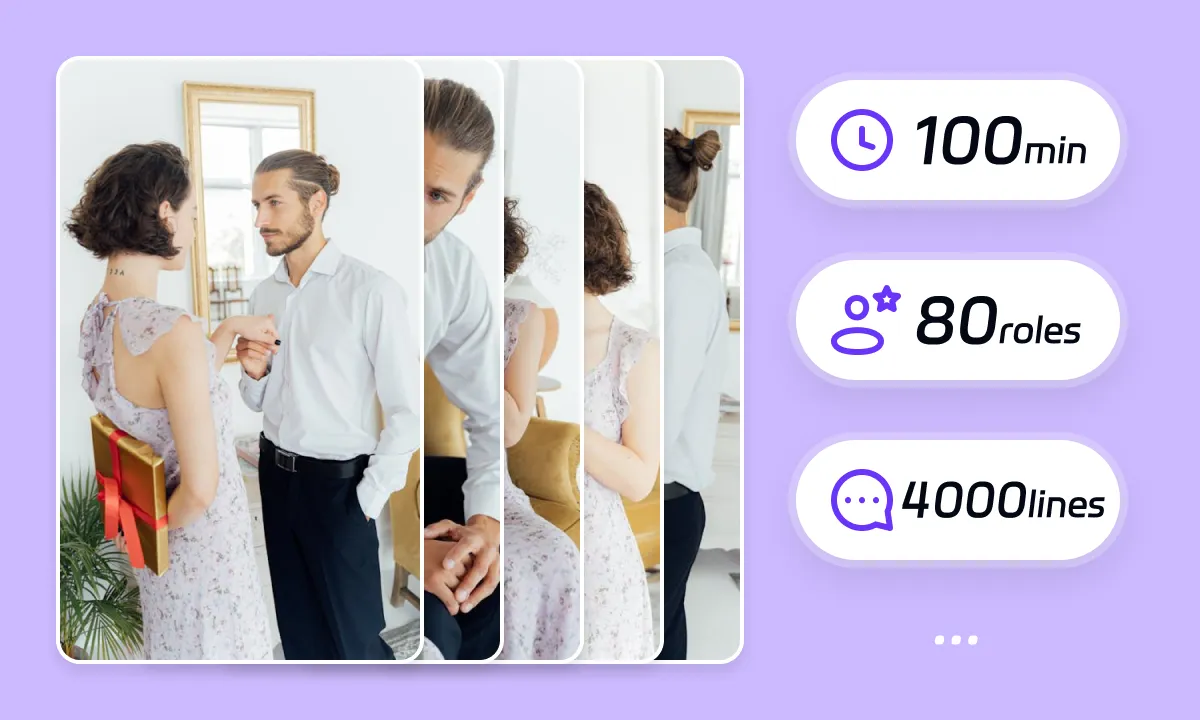
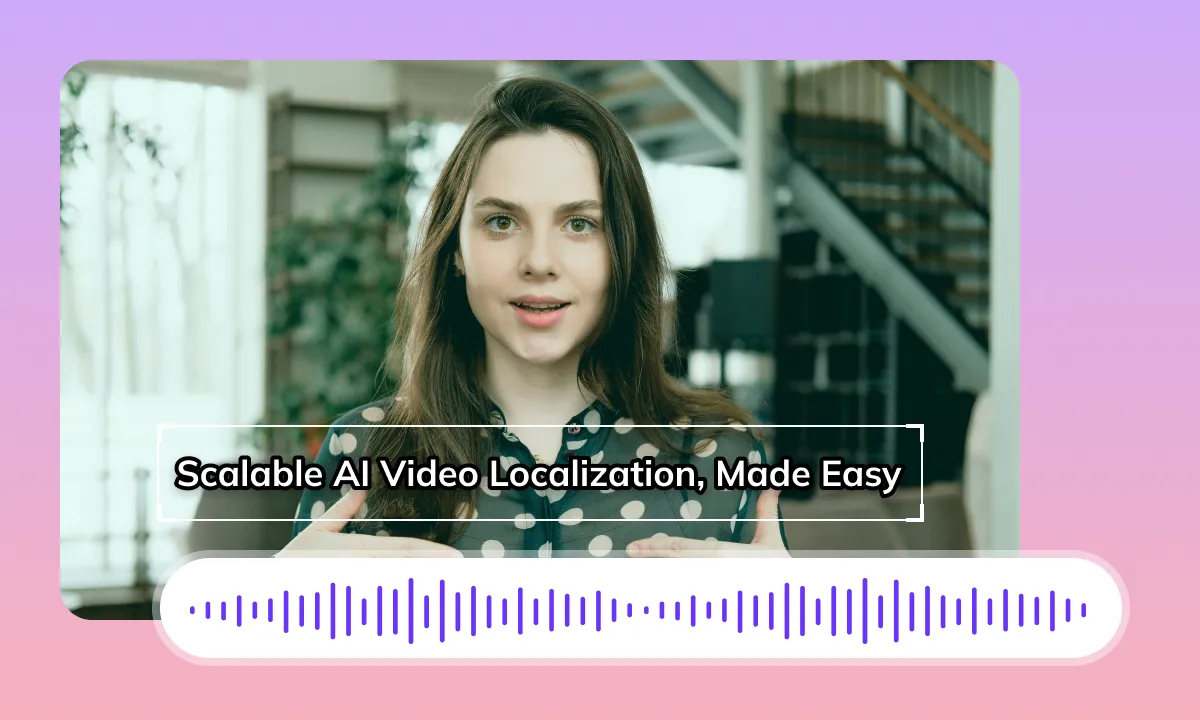
Seamless Japanese Dubbing & Perfect Lip-Sync
GhostCut ensures natural Japanese audio flow by treating related subtitles as whole ideas for TTS. It then precisely times new Japanese subtitles. Since Chinese-to-Japanese translation can change speech length, our AI expertly adjusts the new Japanese audio, subtitles, video, and BGM to maintain perfect sync, just like a seasoned editor.
Translate NowBoost ROI with Flawless Chinese Subtitle Removal
Original Chinese hardsubs can limit your video's global appeal. GhostCut’s AI doesn't just blur; it intelligently reconstructs the background obscured by Chinese subtitles, even complex ones, for a perfectly clean, high-quality visual. This means better viewer engagement, longer watch times, and higher ROI.
Translate Now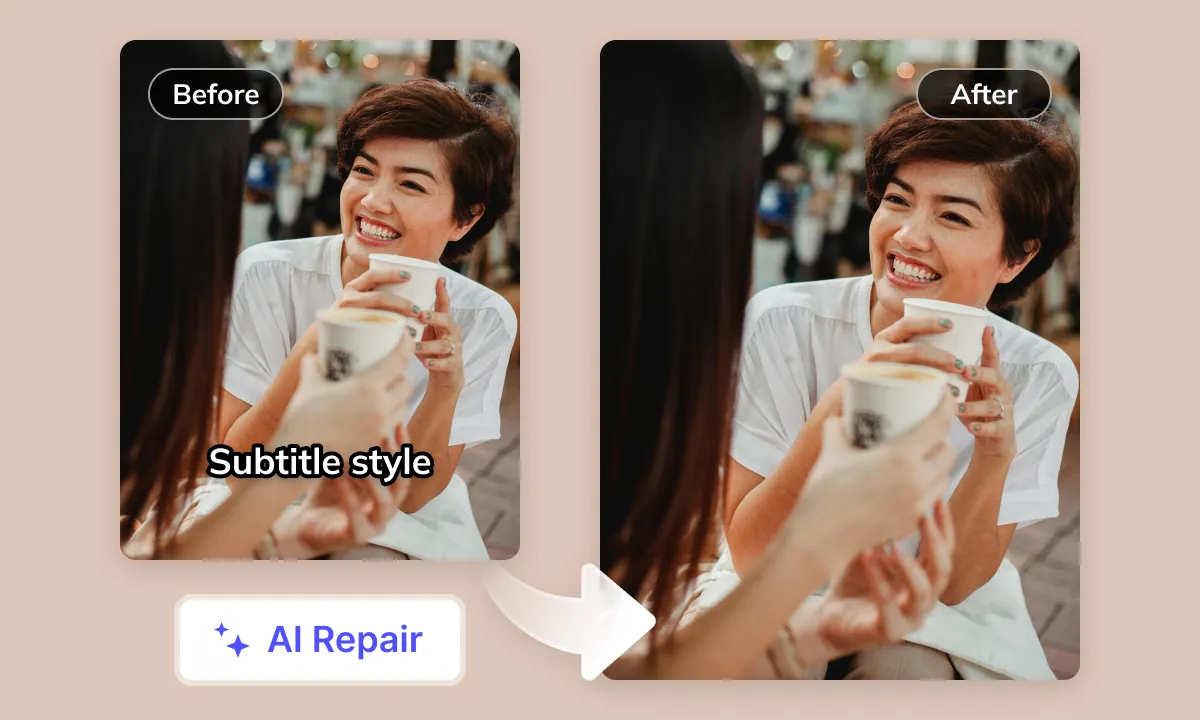
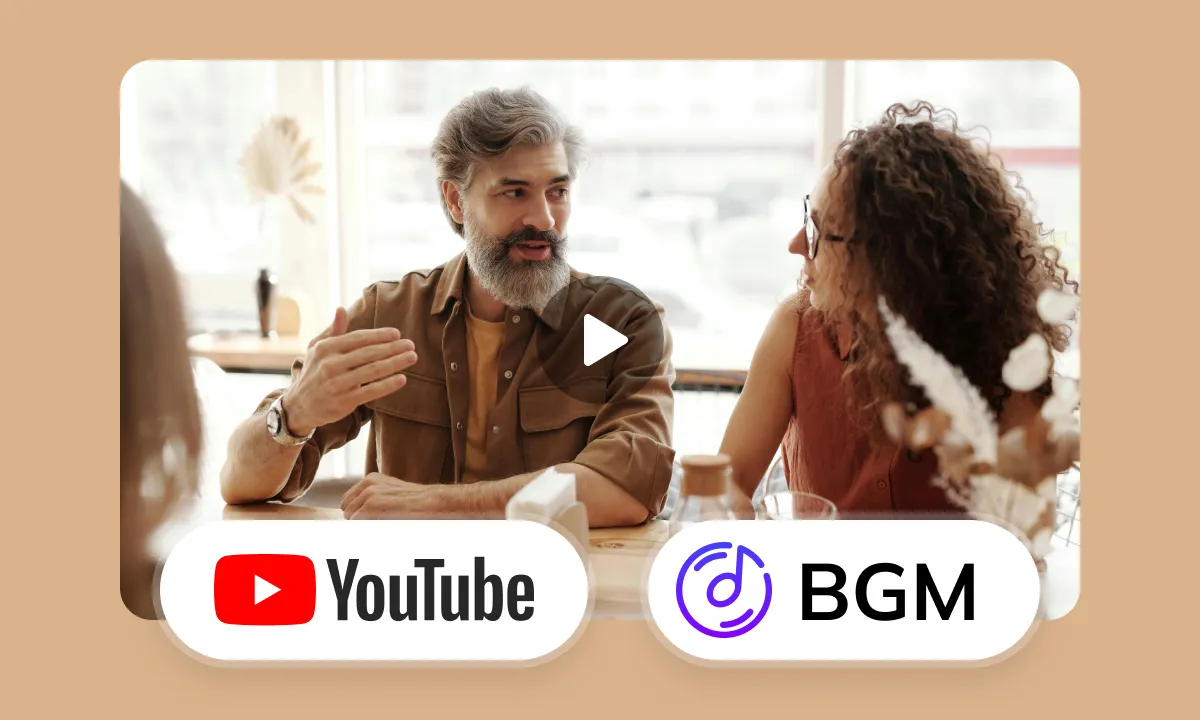
Smart Audio Control for YouTube Creators
Navigating BGM copyright on YouTube is tricky. GhostCut’s advanced audio separation isolates Chinese dialogue for translation, while intelligently managing BGM, sound effects, and even emotional expressions. Our "Keep SFX, Remove Music" option is a creator favorite for avoiding copyright issues without losing your video’s impact.
Translate NowMaking Chinese Videos Understandable to Japanese Viewers
High-quality Chinese video content, from web dramas and food vlogs to life vlogs, is attracting increasing attention. However, these dynamic creations often face challenges effectively reaching the large Japanese user base due to language barriers. On major global video platforms, the lack of professional Chinese-to-Japanese translation or dubbing makes it hard for Japanese viewers interested in Chinese culture to fully understand and enjoy valuable Chinese videos. This impacts viewer experience and interactivity, significantly limiting content spread in Japan. Consequently, there is an urgent market demand for professional, efficient Chinese-to-Japanese AI video translation and dubbing solutions
Chinese to Japanese Video Translation: Challenges and Considerations
Hardcoded Subtitles and Original Audio Interference
Hardcoded Chinese subtitles or original Chinese audio tracks embedded in videos can significantly distract Japanese viewers and disrupt their viewing experience if not handled properly
Significant Grammatical, Lexical, and Cultural Differences
Chinese and Japanese languages have fundamental grammatical differences. Japanese's complex particles, verb conjugations, and honorifics are distinct from Chinese. Cultural nuances in vocabulary, idiomatic expressions, slang, and unique cultural references pose significant translation barriers. Literal translation often fails to convey accurate meaning, necessitating deep understanding and localization
Japanese Subtitle Layout Considerations
Japanese script (including Kanji, Hiragana, Katakana) differs visually from Chinese, especially when mixed. To ensure comfortable reading for Japanese viewers, subtitles require proper segmentation and layout, controlling character count per line and display duration to avoid information overload
Pacing and Information Density Alignment
Chinese typically has a faster speaking pace and higher information density. Expressing the same content naturally in Japanese often requires longer sentences. Ensuring Japanese voiceovers or subtitles are neither rushed nor drawn-out while maintaining audio-visual synchronization is a technical challenge
Chinese Speech Recognition Accuracy Bottlenecks
Despite technological advancements, dialects, accents, overlapping conversations, and complex background noise remain primary factors affecting the accuracy of Chinese AI speech-to-text transcription, which forms the basis for subsequent translation and voiceover
Scarcity of Natural Japanese AI Voices
While the number of available Japanese AI voice options is increasing, their emotional expressiveness, naturalness, and authenticity often fall short. High-quality, diverse Japanese AI voiceover resources remain relatively limited, especially for conveying subtle emotions or specific character personas
Difficulty in Cross-Language Lip-Sync
Chinese and Japanese pronunciations involve significant differences in mouth shapes. Achieving an ideal viewing experience requires Japanese voiceovers to highly match the original video character's mouth movements, which is a technically complex and high-precision challenge
Efficient and Intelligent Translation Workflow
An ideal Chinese to Japanese AI video translation workflow should include: high-accuracy Chinese recognition - intelligent and idiomatic Japanese translation (considering grammar, culture, and context) - high-quality Japanese voiceover (emphasizing lip-sync and natural emotion) - automated timeline alignment and editing
Tackling Video Translation Challenges with AI Empowering your Chinese content for any worldwide scenario.
Your All-in-One AI Translation Studio
GhostCut offers more than just Chinese-to-Japanese translation. It's a complete AI-powered workflow: subtitle extraction 、 removal 、 translation and proofreading to multi-character dubbing , BGM processing, and final rendering. Go from Chinese source to global-ready videos, effortlessly.
